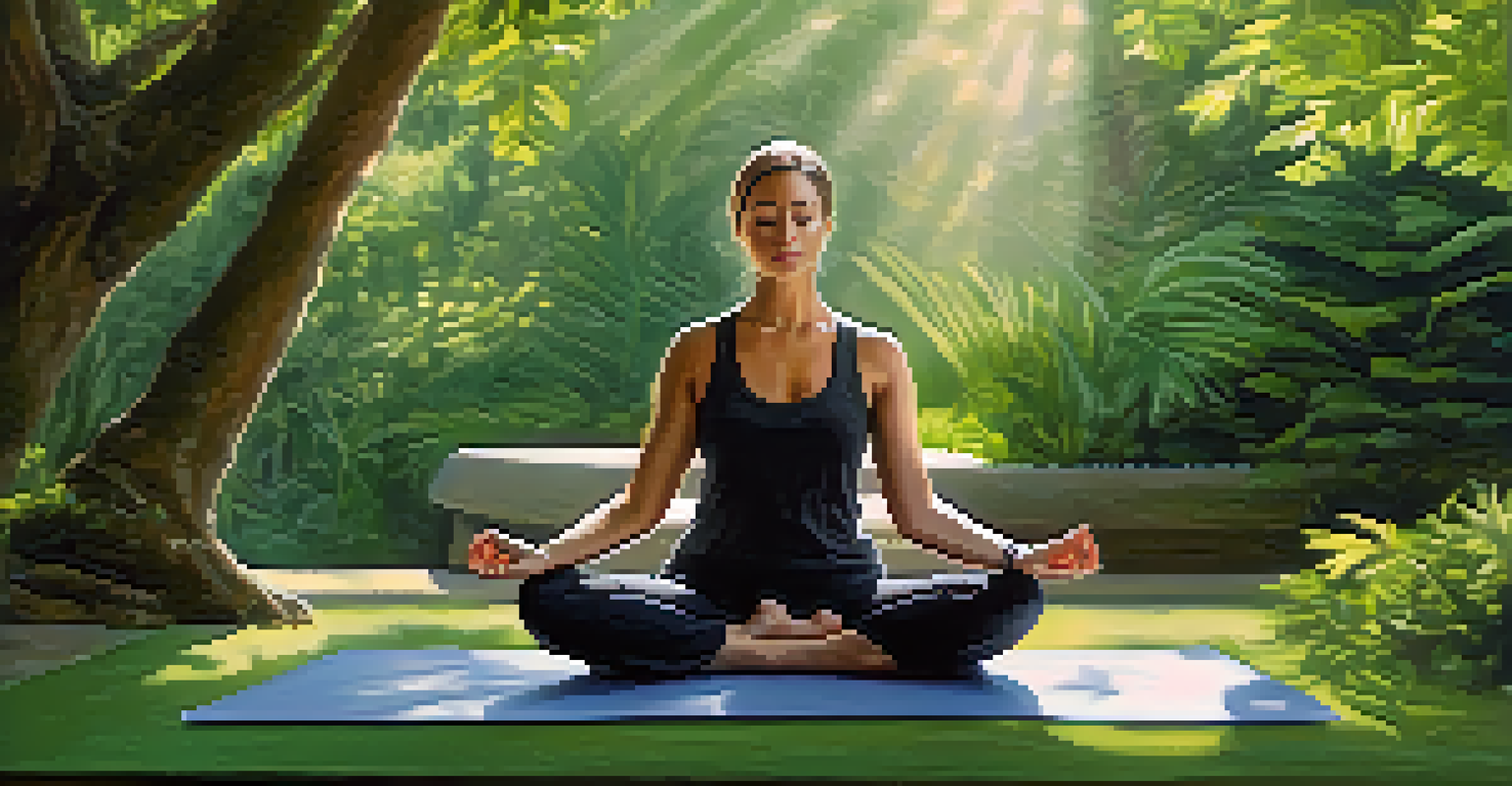Living Mindfully: Strategies for Inner Peace and Clarity

Understanding Mindfulness and Its Benefits
Mindfulness is the practice of being fully present in the moment. It encourages you to observe your thoughts and feelings without judgment, fostering a deeper connection with yourself. By embracing mindfulness, you can experience decreased stress and increased clarity in your daily life.
Mindfulness isn't difficult, we just need to remember to do it.
The benefits of mindfulness extend beyond just stress relief. Research shows that it can improve emotional regulation, enhance focus, and even boost your immune system. Imagine being able to navigate challenges with a calm mind—this is the power of mindfulness.
Incorporating mindfulness into your daily routine can lead to profound changes. Whether it’s through meditation, mindful breathing, or simply noticing your surroundings, these practices can help you cultivate a more peaceful and focused mind.
Establishing a Daily Mindfulness Practice
Creating a daily mindfulness routine doesn’t have to be complicated. Start by setting aside just five minutes each day to focus on your breath or engage in a simple meditation. Over time, you can increase the duration as you become more comfortable with the practice.

Consider integrating mindfulness into everyday activities like eating or walking. For instance, try to eat your meals without distractions, savoring each bite. This practice not only enhances your enjoyment of food but also reinforces a mindful approach to life.
Benefits of Mindfulness Practices
Mindfulness reduces stress, improves focus, and enhances emotional regulation, allowing you to navigate life's challenges with clarity.
Consistency is key to building a successful mindfulness practice. Just like any habit, the more you commit to it, the easier it becomes. Remember, it’s about progress, not perfection, so be gentle with yourself as you embark on this journey.
Mindful Breathing Techniques for Clarity
Mindful breathing is one of the simplest yet most effective mindfulness techniques. By focusing on your breath, you can anchor yourself in the present moment, creating a sense of calm and clarity. Try inhaling deeply through your nose, holding for a few seconds, and exhaling slowly through your mouth.
The mind is everything. What you think, you become.
When you practice mindful breathing, you may notice a shift in your mental state. This technique helps to reduce anxiety and promote relaxation, making it easier to tackle daily challenges. It’s like hitting a reset button for your mind.
You can practice mindful breathing anywhere—whether you’re at home, in the office, or even waiting in line. Just a few moments of focused breathing can help you regain control and clarity, no matter the situation.
Creating a Mindfulness Space at Home
Designating a specific space in your home for mindfulness can enhance your practice. This could be a cozy corner with a cushion, some candles, or even a plant to bring nature indoors. Having a dedicated space signals to your mind that it’s time to focus and relax.
Personalizing your mindfulness space can make it even more inviting. Consider adding elements that resonate with you, such as inspirational quotes or soothing music. The goal is to create an atmosphere that encourages peace and introspection.
Daily Mindfulness Routine Tips
Establishing a simple daily routine, even for just five minutes, can significantly enhance your mindfulness practice over time.
Whenever you step into this space, take a moment to breathe and let go of distractions. This physical reminder can help you transition into a mindful state more easily, making your practice more effective and enjoyable.
Utilizing Mindfulness Apps for Guidance
In today’s digital age, mindfulness apps can be great allies in your journey toward inner peace. Apps like Headspace or Calm offer guided meditations, breathing exercises, and reminders to help you stay on track with your practice. They can provide structure and variety, especially for beginners.
These apps often feature sessions tailored to specific needs, whether you’re looking to reduce anxiety, improve sleep, or simply find a moment of calm. With their user-friendly interfaces, you can easily incorporate mindfulness into your busy schedule.
Remember, though, that while apps can be helpful, the essence of mindfulness lies within you. Use these resources as tools to support your practice, but trust your intuition and personal experiences as you explore mindfulness.
The Power of Gratitude in Mindful Living
Gratitude and mindfulness go hand in hand, enhancing your overall sense of well-being. By taking time each day to reflect on what you’re thankful for, you cultivate a positive mindset that can shift your focus from stress to appreciation. It’s like adding color to a black-and-white photo.
You can practice gratitude by keeping a journal or simply sharing your thoughts with a loved one. Acknowledging even the smallest blessings can create a ripple effect of positivity in your life. This practice helps to ground you in the present and fosters a deeper appreciation for your experiences.
Incorporating Gratitude and Movement
Integrating gratitude and mindful movement, like yoga, into your practice fosters a deeper sense of well-being and connection to your body.
As you weave gratitude into your mindfulness practice, you may find that it becomes easier to navigate challenges with a sense of peace and clarity. It’s a beautiful reminder that joy can be found in the little things, even amid chaos.
Mindful Movement: Yoga and Beyond
Mindful movement practices, such as yoga or tai chi, can be powerful tools for cultivating clarity and inner peace. These activities encourage you to connect with your body and breath, promoting relaxation and reducing tension. Imagine flowing through movements while maintaining awareness—it's truly liberating.
Engaging in mindful movement can also enhance your physical health. It encourages flexibility, strength, and balance, all while grounding your mind. As you flow through each pose, you become more attuned to your body’s needs and sensations.

Whether you’re a seasoned yogi or a beginner, the key is to approach your practice mindfully. Focus on each movement and breath, allowing yourself to be fully present. This awareness transforms your workout into a nourishing experience for both body and mind.